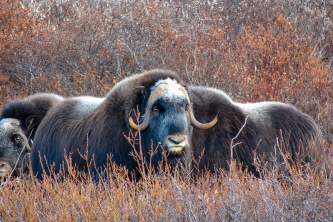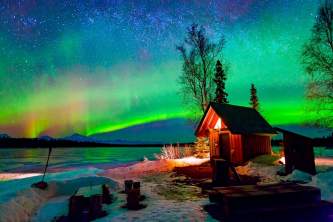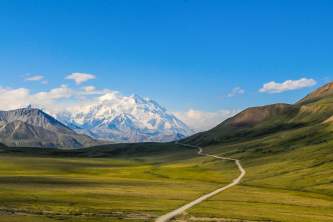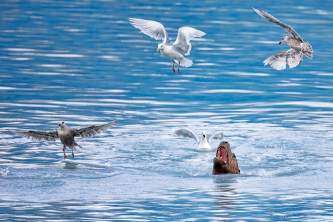By
An Arctic tern perched on the “Do Not Feed Birds” sign. It was not afraid. It looked her in the eye.
“This one had personality,” Rees said.
Rees, who works for the Bureau of Indian Affairs, moved to Anchorage with her husband when he transferred to job with the U.S. Forest Service. Though she grew up in the Lower 48 states, she has extended family around Alaska—her mother was born in Fort Yukon—and visited during summers.
Living in Alaska full time, Rees found herself drawn more and more to the wildlife, and began taking photos of what she saw.
“We weren’t that in tune to the wildlife the first year we were here. It took us a while.” But as time passed, Rees and her husband began searching out views of Dall sheep, bald eagles, moose, bears—and beluga whales.
During a recent public beluga whale count, for instance, Rees encountered belugas swimming through fog just offshore in Turnagain Arm.
“It was really exciting because you could hear them before you could see them. First you hear them chirping, and then you hear them breathing.”
Like many Alaskans, Rees marks the progression of the season by the arrival and nesting of the Arctic terns in the Marsh, a species that migrates more than 20,000 miles each year between wintering grounds in the Antarctic and the Far North.
“I start looking in there in June for the terns—and the marsh gulls and the mew gulls. I try to get pictures of their babies,” she said. The terns can be “ferociously protective of their nests and their babies. I’ve been dive bombed by them.”
But this particular tern was not aggressive. Instead of wheeling overhead and scolding the human with the camera, he waited calmly for his portrait.
“It was like he was posing in the sun,” she said. “It was just so unusual.”




